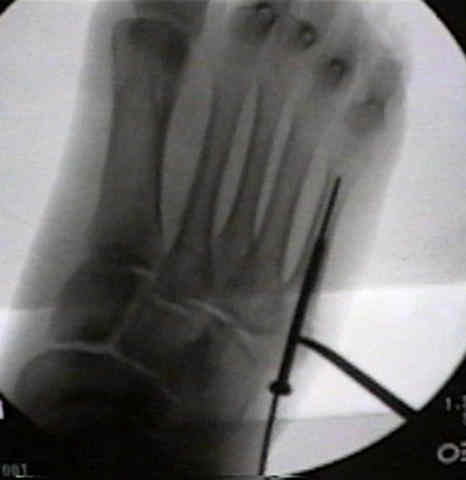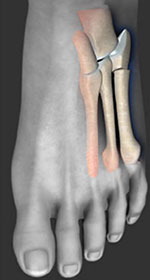
There are many different approaches to a Jones fracture surgery, and each surgeon chooses to perform a version that is appropriate for the fracture, and they are comfortable with. How do you choose what Jones fracture surgery to use?

About half of all Jones fractures can be treated without surgery, and we will try everything possible to avoid surgery. Surgery is only recommended for Jones fractures that have not healed with conservative treatment or whose livelihood depends on a swift recovery. Who should have surgery on Jones fractures? They also have a higher chance of needing surgery. This fracture requires a longer time non-weight bearing and in a cast. The Jones fracture tends to be difficult to heal.

The Jones fracture occurs in an area of the 5th metatarsal bone where there is very minimal blood flow, making it prone to healing slowly, or not at all. The blood supply dictates how well a fracture will heal, and in the case of the Jones fracture, poor blood supply can cause significant difficulties. This motion is very common in sports like football, soccer and basketball, though it can happen in any variety of low and high velocity activities.įor any fracture to heal properly, there must be a steady reliable blood supply to the fractured area. One of the most common activities known to cause the Jones fracture is a sports maneuver called “cutting”, which is a sudden change in direction with one foot firmly planted on the ground. This is the direct cause of the Jones fracture. When you move suddenly, or step improperly the muscle and tendon place force on the base of the 5th metatarsal, which can be so strong it breaks the bone partially or fully. The tendon of the peroneus brevis muscle in your leg attaches to the base of your 5th metatarsal bone. Jones fractures can be very frustrating because they can be caused by anything from missing a step when walking down a flight of stairs, to sports activities or vehicle accidents. Pain with wiggling the little toe, or moving the ankle in a circular motion.

Numbness or tingling along the outside of the foot.Bruising of the foot (can be extensive, around the heel and under the arch).Significant pain at the outside of the foot radiating to the bottom or middle.During a sports game or other physical activity you may feel a “pop” in the outside part of your foot accompanied by significant pain.īelow are some of the most common signs of a Jones fracture: Jones fractures are common in individuals who run, dance, or play sports. How do I know if I have a Jones fracture? You may be able to feel your own 5th metatarsal base by running your fingers along the outside of your foot, because it often sticks out just a little bit around the middle of the foot. The 5th metatarsal is a fairly long bone in your foot that supports a lot of body weight, and serves as an important attachment site for several big muscles. Treatment then needs to address the cause of the fracture to reduce the risk of it happening again, particularly where the cause is repetitive stress to the region.A Jones fracture is a fracture right at the base (long bone behind your 5th toe) of the 5th metatarsal bone. Because the area of the Jones’ fracture has a lower blood supply than other foot regions, it can make healing slower and more difficult. Resting, using ice, a voiding painful activity and taking anti-inflammatories where appropriate can then help to reduce painful symptoms. The first step to treatment is differentiating a Jones fracture from other fractures that can occur in the same region, such as an avulsion fracture or a spiral/oblique shaft fracture. Pain and tenderness on the outside of the foot through the fifth metatarsal.

Symptoms of a Jones’ fracture can include: It may also develop from repetitive stress over time that causes small hairline cracks and leads to a gradual onset of painful symptoms. Inversion sprains or twisting motions where the outside of the foot suddenly comes in contact with the ground can result in a Jones fracture. This is the most common type of metatarsal fracture and can limit your ability to walk and perform daily activities.Ī Jones’ fracture can either develop over time like a stress fracture, or may occur suddenly as a result of trauma or injury. A Jones’ Fracture describes a fracture at the base of the fifth metatarsal bone (long bone of the foot) near the bony bump ( styloid process ) on the outside of the midfoot.


 0 kommentar(er)
0 kommentar(er)
